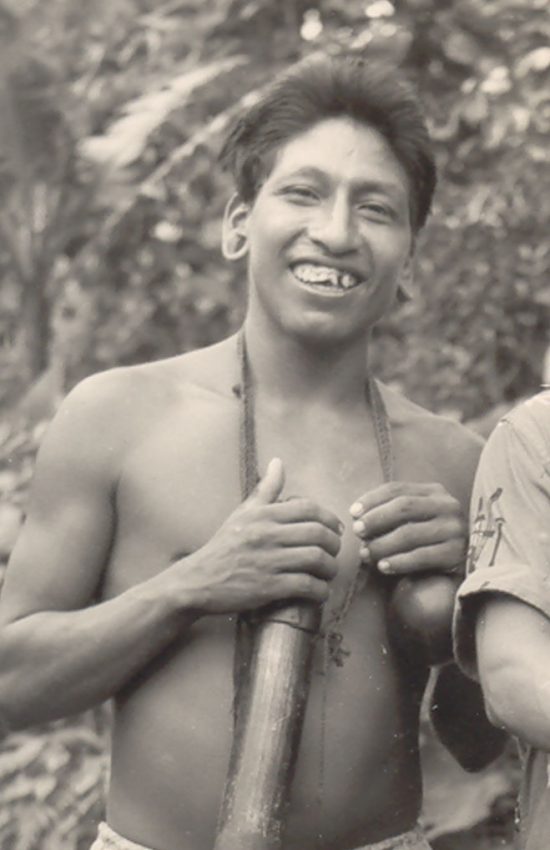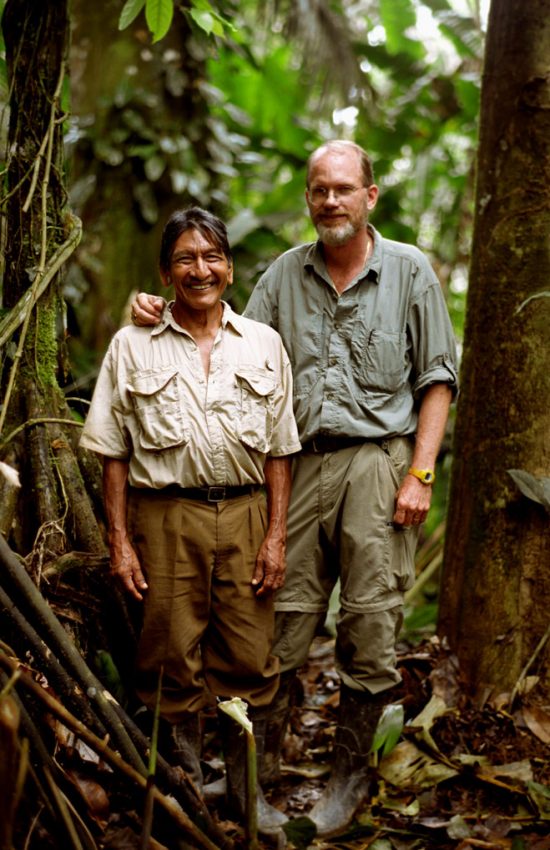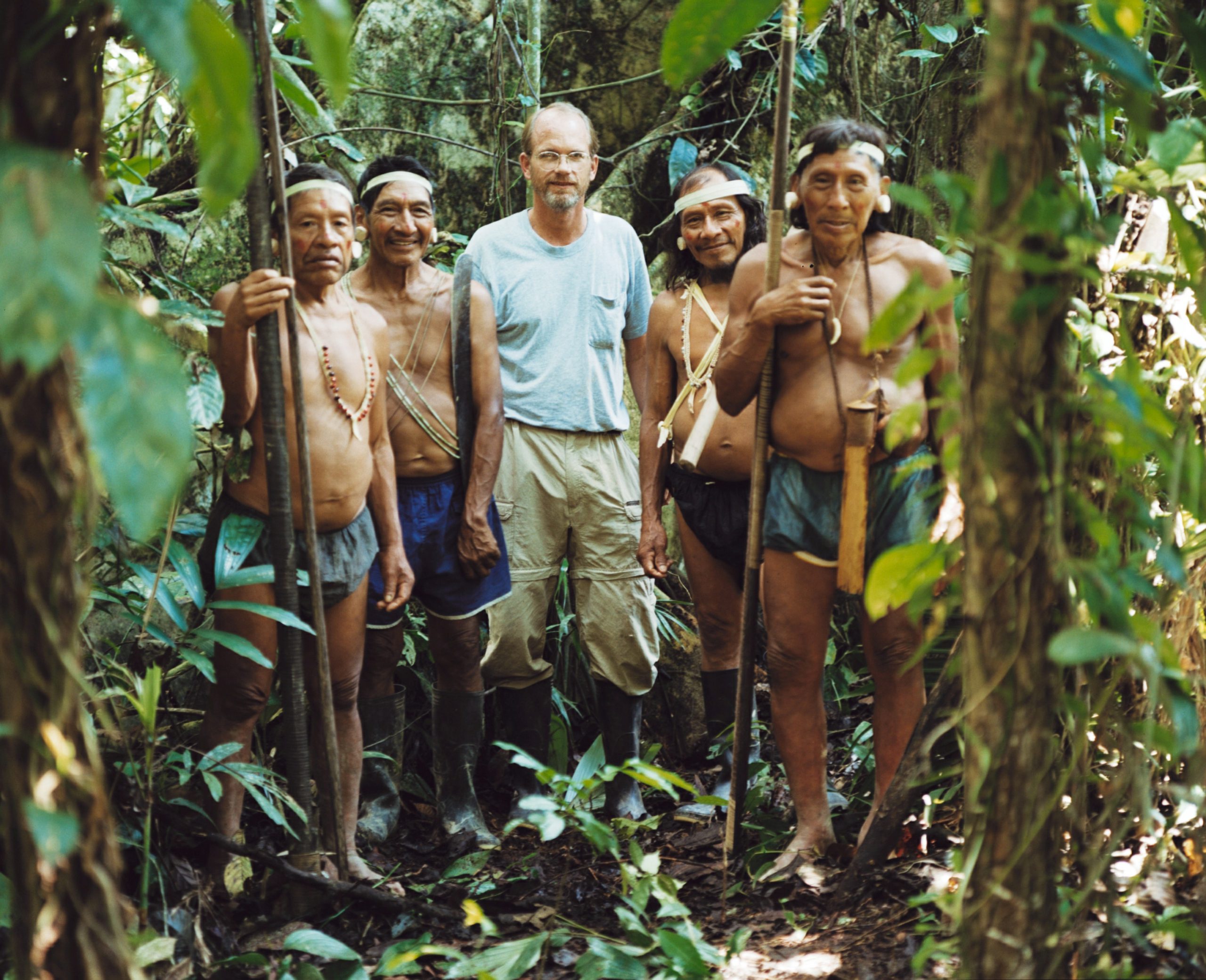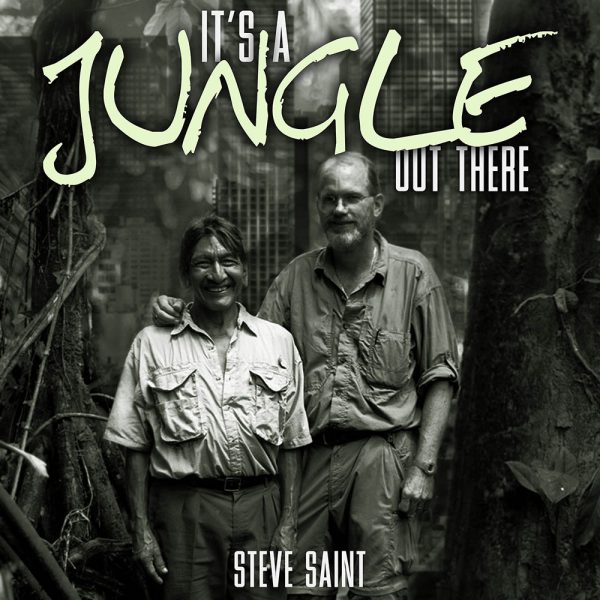Remembrance on Facebook by a member of the Saint Family.
Remembering Mincaye
This page features an obituary for Mincaye written by Steve Saint, media featuring Mincaye, and more. At the bottom of the page, you are welcome to leave a comment remembering Mincaye and how this story has impacted your life. We also encourage you to share this page and pictures you have of Mincaye on social media using #mincaye.
Obituary for Mincaye
 He was born into a violent “Stone Age” culture in the Amazon Rain Forrest of eastern Ecuador, South America.
He was born into a violent “Stone Age” culture in the Amazon Rain Forrest of eastern Ecuador, South America.
Mincaye, whose name means “Wasp,” died April 28, 2020 at home in the tiny village of Tzapino of natural causes related to old age. He was between 88 and 91 years of age. Mincaye is survived by his wife Ompodae (Otter), thirteen children, fifty some grandchildren, many many great grandchildren and tens of thousands of people who saw him as proof of God’s redeeming and transforming power.
When “Grandfather Mincaye,” as we affectionately knew him, helped five other Waodani warriors spear my father Nate Saint, Jim Elliot, Pete Fleming, Roger Youderian and Ed McCully to death on a river sandbar in 1956, there was no reason to believe anyone outside of his small clan and the five bereaved families would ever take note of that incident.
Nevertheless, millions of people in North America and Europe followed radio news releases that five North American missionaries were missing in the Ecuadorian jungle. For most of a week there was no word of their fate. When a search party finally found their five, spear-riddled bodies the question was, “Why?”.
The term “Tragedy” accompanied virtually every radio, newspaper, and magazine article as the news of these vicious and seemingly senseless killings spread. But sixty-four long years later, it seems clear that Genesis 50:20 was about to come true again. “What man meant for evil, God meant for good.”
There has been no greater ambassador of that message than the life of Grandfather Wasp. Mincaye is also the main character in the feature film, “End of the Spear.” When “End of the Spear” in book and movie form became available, Mincaye traveled around the United States and Canada telling his life story. This amazing jungle warrior who counted only up to twenty on his fingers and toes, personally impacted hundreds of thousands of people in audiences as large as forty-five thousand. The movie in which his life plays the leading role has now been translated into the mother tongues of approximately one quarter of the world’s population.
 Mincaye’s most frequent speaking theme was, “We lived angry, hating and killing, ‘ononque’ (for no reason), until they brought us God’s markings. Now, those of us who walk God’s trail live happily and in peace.” Then he would often ask, “How long did you have God’s Markings before you brought them to us?” “Waa, iñinamai” (well, I don’t know). “Maybe if we had known sooner that ‘Waengongi’ (the Creator) did not see it well that people should live angry, hating and killing for no reason, we could have walked God’s trail sooner.”
Mincaye’s most frequent speaking theme was, “We lived angry, hating and killing, ‘ononque’ (for no reason), until they brought us God’s markings. Now, those of us who walk God’s trail live happily and in peace.” Then he would often ask, “How long did you have God’s Markings before you brought them to us?” “Waa, iñinamai” (well, I don’t know). “Maybe if we had known sooner that ‘Waengongi’ (the Creator) did not see it well that people should live angry, hating and killing for no reason, we could have walked God’s trail sooner.”
There are people who question the motives of the five missionaries who made contact with the Waodani in 1956. There are some who question Mincaye’s motives in participating in 10 speaking tours to the U.S. and Canada, trips to Europe, Panama and even India. I can only answer that I was Mincaye’s traveling companion on all of those trips. We traveled together, ate together, shared the same room, and spoke together. I have known Mincaye since I was a little boy when he took me under his wing and had his sons teach me to blowgun hunt. He was one of my dearest friends in the world. Yes, he killed my father, but he loved me and my family. One of my grandsons is named Mincaye.
We will miss you, Maemae Mincaye, but we hold onto the certain hope that we will soon see you again (John 3:16).
– Steve Saint
Videos Featuring Mincaye
Journey to the Amazon Documentary
Steve & The Waodani
“[The Waodani] wanted me to teach them how to do the things that missionaries had been doing for them for years, so they wouldn't be completely dependent on outsiders, and so they could take care of their own people's needs.”
Steve Saint
The Waodani tribe, formerly known as the Aucas, are a well-known indigenous tribe from the jungles of Ecuador. In 1956, this is the tribe that speared Nate Saint, Jim Elliot, Ed McCulley, Roger Youderian, and Pete Flemming to death. This tragedy gave way to one of the most well known stories of martyrdom, sacrifice, and Gospel transformation. Due to the hard work of these men, widowed Elisabeth Elliot, and Rachel Saint (sister of Nate), many in the tribe came to know Christ.
After Rachel’s death in 1994, the Waodani asked Steve Saint (son of Nate) to live with them. At this time, the Waodani considered Steve one of their own, and Steve considered Mincaye (who killed his father) his adopted father. This is truly only a story that God could write. However, Steve wondered what he could do for the tribe that more capable missionaries weren’t already doing for them. The Waodani said, “We don’t want you to come ‘do’ for us, we want you to teach us ‘how to do’ the things the outsiders have done for us.” They ultimately wanted to meet the needs of their own tribe, and then to use those skills to reach their own people with the Gospel. Amazingly, the Waodani laid the blueprint for ITEC that we still use today.
Steve came back to the States and founded ITEC in 1996. God has faithfully provided a growing team and facility dedicated to Great Commission participation of all believers. Steve is still involved as a member of the board of directors and his son, Jaime, is ITEC’s executive director.


